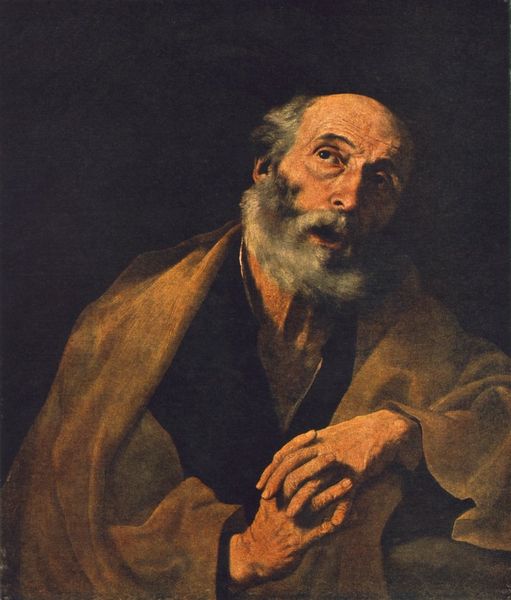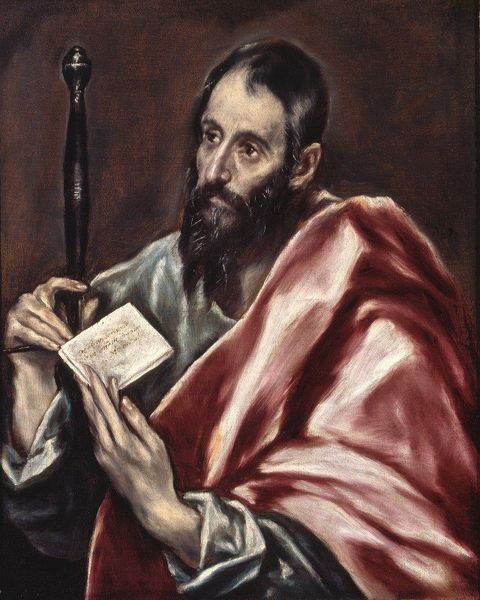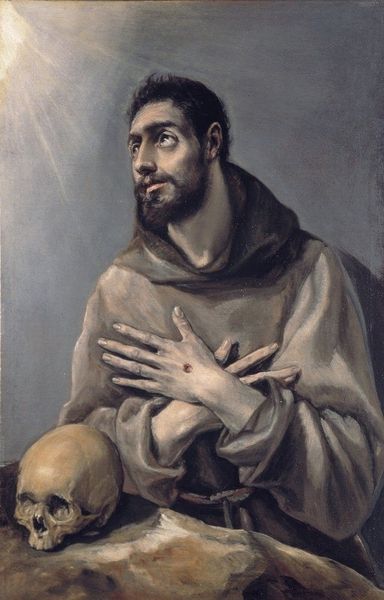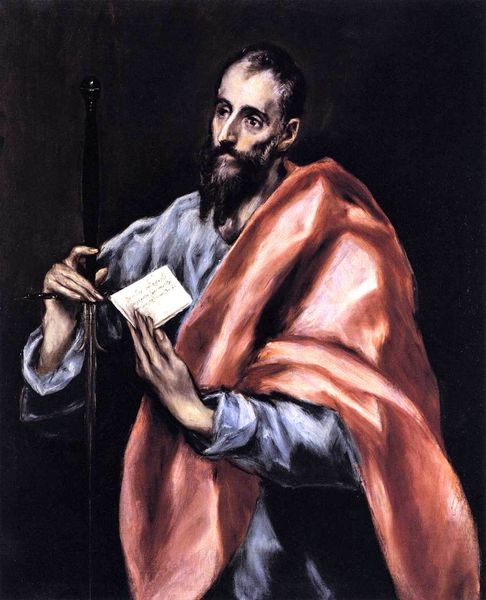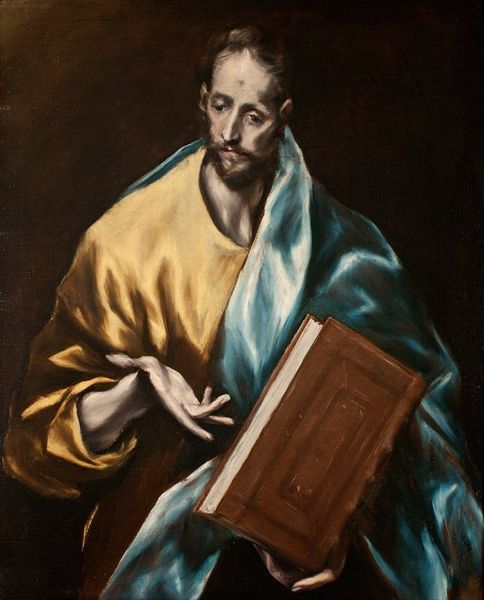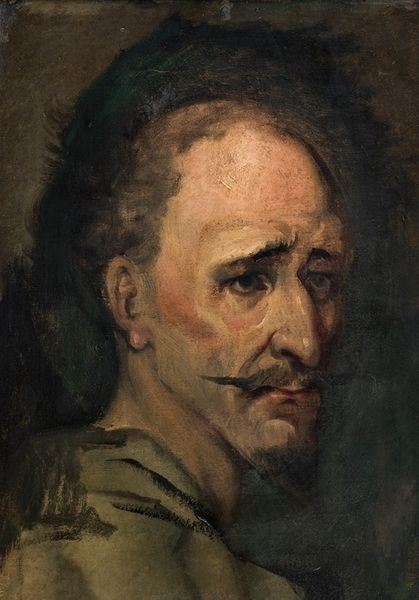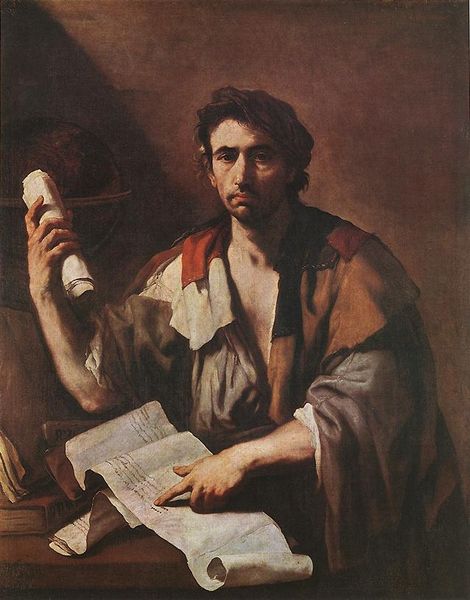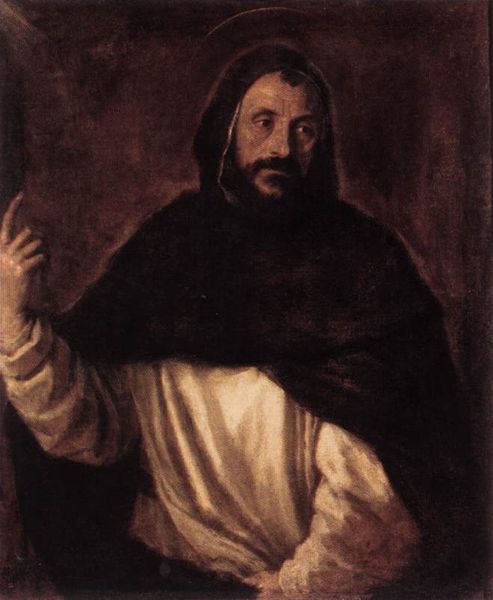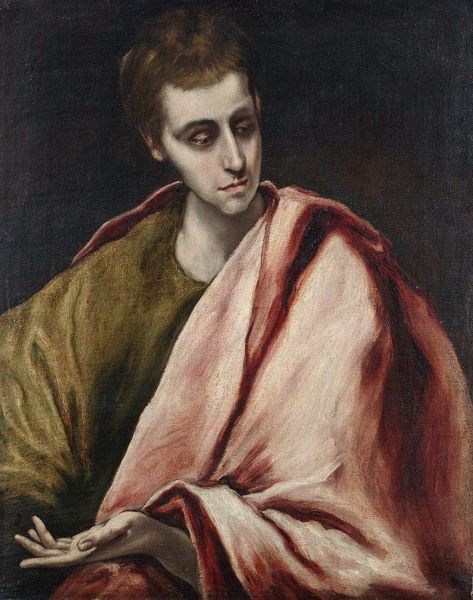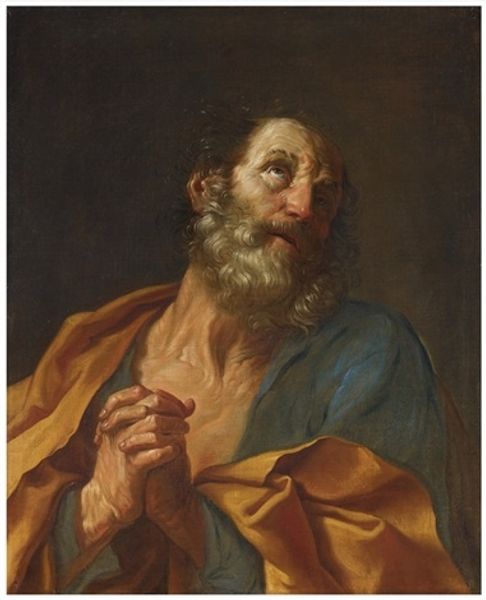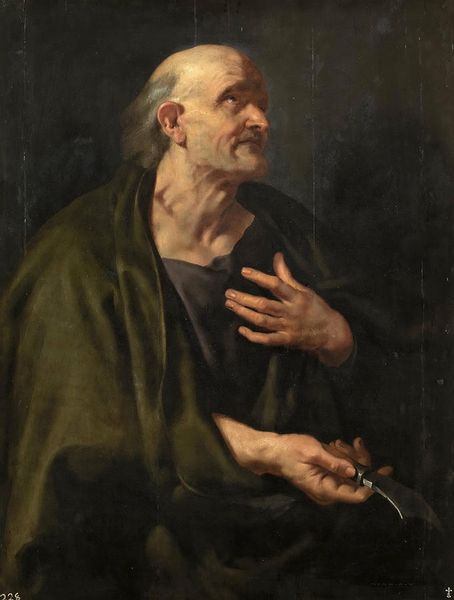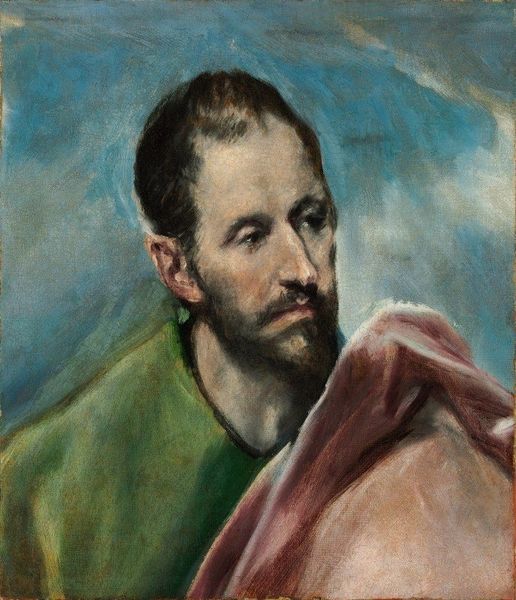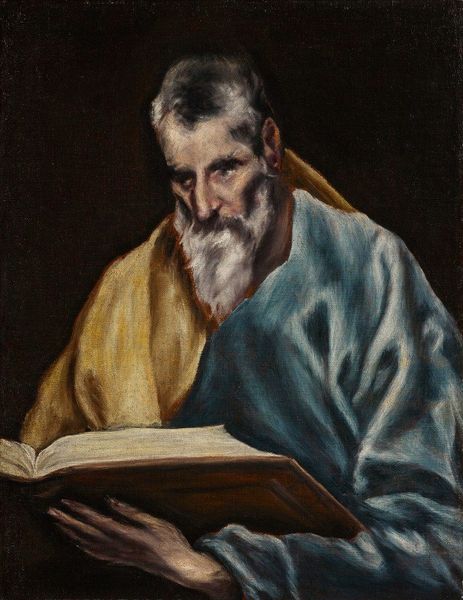
painting, oil-paint
#
portrait
#
portrait
#
painting
#
oil-paint
#
mannerism
#
figuration
Dimensions: 72 x 55 cm
Copyright: Public domain
Curator: Look at this incredible portrait, St. Jacobus, completed around 1600 by El Greco. What’s your initial take? Editor: Stark. Austere. I immediately focus on the intense blue of his garment and the strangely elongated fingers of his hand. Curator: Right? The drama El Greco infuses with colour. Notice how this shade links him to other portrayals of male Catholic figures during that period and to their position of power within the religious hierarchy, yet, at the same time, it renders this Jacobus deeply vulnerable and human. Editor: Definitely. It's impossible to ignore that. And it's achieved, in large part, through the application of paint. The visible brushstrokes, the way the fabric is rendered almost sculpturally… You sense the very labor of its creation. Curator: Precisely, this links to broader themes. The Catholic Counter-Reformation period pushed for relatable and intensely emotive imagery, contrasting the perceived stoicism of emerging Protestant aesthetics. It reflects a calculated emotional manipulation—an element of early modern propaganda. Editor: A shrewd point. So even the specific kind of canvas El Greco would've chosen to work on, a linen probably woven in Venice, could hold symbolic meaning given the complex networks of production and dissemination of art in Europe back then. It is interesting to think how even material consumption can become a statement of allegiance. Curator: It’s a multifaceted dialogue across materiality, labour, class and religion all conveyed with oil paint and masterful handling of symbolism. Editor: It brings such interesting questions to the fore regarding artistic intentions and broader cultural meaning when considering materials and art making. Curator: Absolutely. Examining artwork like St. Jacobus through multiple intersecting perspectives lets us decode some of its complex narrative power, doesn't it? Editor: I think so. Shifting my own perception just slightly really enriches the experience of viewing something like this.
Comments
No comments
Be the first to comment and join the conversation on the ultimate creative platform.
